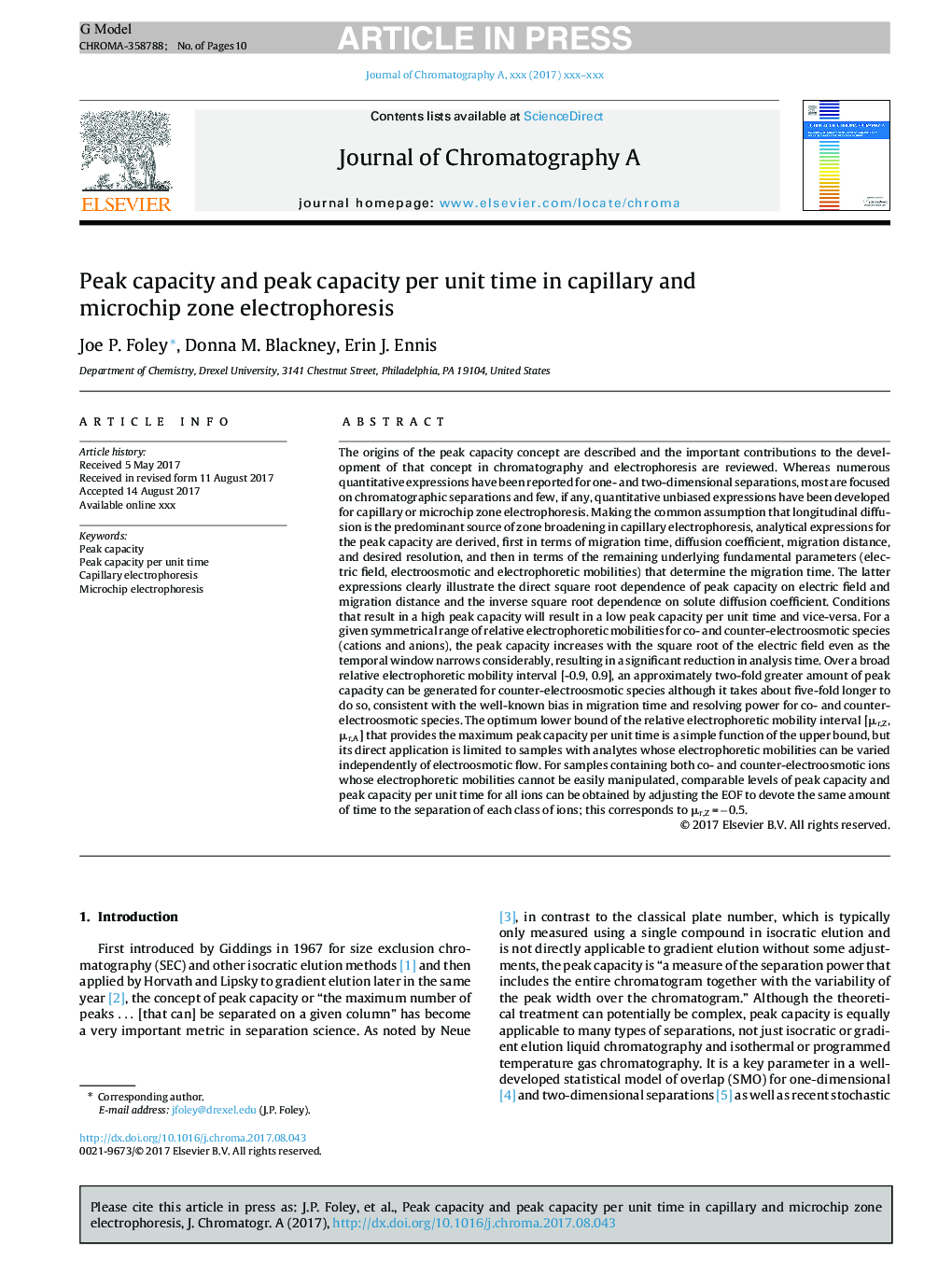| کد مقاله | کد نشریه | سال انتشار | مقاله انگلیسی | نسخه تمام متن |
|---|---|---|---|---|
| 7609765 | 1493403 | 2017 | 10 صفحه PDF | دانلود رایگان |
عنوان انگلیسی مقاله ISI
Peak capacity and peak capacity per unit time in capillary and microchip zone electrophoresis
ترجمه فارسی عنوان
ظرفیت حداکثر و حداکثر ظرفیت در واحد زمان در الکتروفورز منطقه مویرگی و میکروچاپ
دانلود مقاله + سفارش ترجمه
دانلود مقاله ISI انگلیسی
رایگان برای ایرانیان
کلمات کلیدی
موضوعات مرتبط
مهندسی و علوم پایه
شیمی
شیمی آنالیزی یا شیمی تجزیه
چکیده انگلیسی
The origins of the peak capacity concept are described and the important contributions to the development of that concept in chromatography and electrophoresis are reviewed. Whereas numerous quantitative expressions have been reported for one- and two-dimensional separations, most are focused on chromatographic separations and few, if any, quantitative unbiased expressions have been developed for capillary or microchip zone electrophoresis. Making the common assumption that longitudinal diffusion is the predominant source of zone broadening in capillary electrophoresis, analytical expressions for the peak capacity are derived, first in terms of migration time, diffusion coefficient, migration distance, and desired resolution, and then in terms of the remaining underlying fundamental parameters (electric field, electroosmotic and electrophoretic mobilities) that determine the migration time. The latter expressions clearly illustrate the direct square root dependence of peak capacity on electric field and migration distance and the inverse square root dependence on solute diffusion coefficient. Conditions that result in a high peak capacity will result in a low peak capacity per unit time and vice-versa. For a given symmetrical range of relative electrophoretic mobilities for co- and counter-electroosmotic species (cations and anions), the peak capacity increases with the square root of the electric field even as the temporal window narrows considerably, resulting in a significant reduction in analysis time. Over a broad relative electrophoretic mobility interval [-0.9, 0.9], an approximately two-fold greater amount of peak capacity can be generated for counter-electroosmotic species although it takes about five-fold longer to do so, consistent with the well-known bias in migration time and resolving power for co- and counter-electroosmotic species. The optimum lower bound of the relative electrophoretic mobility interval [μr,Z, μr,A] that provides the maximum peak capacity per unit time is a simple function of the upper bound, but its direct application is limited to samples with analytes whose electrophoretic mobilities can be varied independently of electroosmotic flow. For samples containing both co- and counter-electroosmotic ions whose electrophoretic mobilities cannot be easily manipulated, comparable levels of peak capacity and peak capacity per unit time for all ions can be obtained by adjusting the EOF to devote the same amount of time to the separation of each class of ions; this corresponds to μr,Z = â0.5.
ناشر
Database: Elsevier - ScienceDirect (ساینس دایرکت)
Journal: Journal of Chromatography A - Volume 1523, 10 November 2017, Pages 80-89
Journal: Journal of Chromatography A - Volume 1523, 10 November 2017, Pages 80-89
نویسندگان
Joe P. Foley, Donna M. Blackney, Erin J. Ennis,
